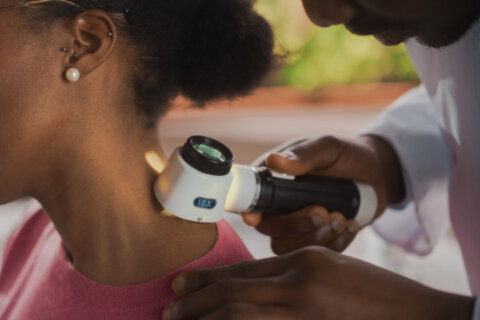The good news is that our craving for junk food decreases as we age. And that may be nature’s blessing, since the bad news is that our metabolism also slows with age, meaning the calories we consume stick to us even more.
Throughout our lives, our food tastes often change as our palates are exposed to a variety of foods and become more refined, but are the changes at least in part also physiological?
That question led researchers at Columbia University to conduct a study of children, adolescents and young adults to test whether people start to desire healthier food as they get older — or at least, shun unhealthy food.
The researchers did neuroimaging scans on 105 people, ages 6 to 23. They were shown pictures of unhealthy sweet and savory foods while undergoing fMRI scans, which measure brain activity by detecting changes in blood flow. For some of the pictures, they were told to imagine how the foods tasted and smelled. They were also told to imagine the shape and color of other foods that were farther away. Then participants were asked to rate how much they wanted to eat the foods.
The aim was to test both how cravings change with age and how the cognitive strategy — imagining the visual aspects of food — can influence those cravings.
In both scenarios, children were found to have the strongest desire for unhealthy foods, but people of all ages had fewer cravings after the visualization exercise.
Food’s Appearance Affects Your Cravings
“We purposely chose foods [in the study] that all people would recognize,” says Jennifer Silvers, a psychology postdoctoral fellow at Columbia University who worked on the study. “Chips, pizza, hamburgers, cookies, cakes. Basically anything that’s not good for you and looked appealing.”
Silvers adds that long-standing evidence suggests visual cues are involved in the recruitment of certain brain regions involved in food preferences. Foods’ appearance also resonates more with children. While many adults love pesto, for example, the thought of eating green food wouldn’t appeal to children, Silvers says.
Children are also less inclined to hold onto negative associations of, say, eating too much sugar, Silvers continues. Kids don’t associate high-sugar foods with tummy aches and sugar crashes like adults do. In other words, “the immediate experience of eating something delicious” for kids outweighs any negative repercussions of eating bad foods, Silvers says. Adults are more cognizant of reaching long-term goals like maintaining a certain weight.
That might be one reason food cravings start to decrease with age, or on the contrary, why people who have grown up eating junk food struggle with obesity later on — because they have trouble breaking the habit, Silvers adds.
Hormones may also influence how cravings change. Silvers recalls hitting puberty and suddenly liking pickles and eggs. It’s well-known that pregnant women adopt temporary food cravings because of the rush of hormones. People who have undergone radiation therapy for cancer may also experience a certain rebirth of their taste buds.
Age Aside, You Can Change Your Food Cravings
That children crave more sugar than adults is perhaps to be expected, but the problem is that kids are indulging those cravings at a level that is making them alarmingly susceptible to diseases like diabetes that used to only affect a minority of adults. And adults are also increasingly diabetic. Fifty percent of all Americans over age 65 are prediabetic, says Mark Hyman, a physician and the chairman of the Institute for Functional Medicine.
“All of this can be shifted by changing your diet and exercise,” Hyman says. “Even Type 2 diabetes is reversible.”
And that’s true at any age. “Food is medicine and information, not just calories. It drives the signals that drive metabolism,” Hyman says. “[People] can upgrade their biological software by changing the quality of food they eat, and by eating a lot of whole plant-based food.”
Doing that earlier rather than later will only help you, since as we age, we lose muscle, gain fat and become numb to the effects of insulin, which ultimately drives hunger and sugar cravings, Hyman continues. Another good thing about changing your diet early is that the consequences have a protective effect for many diseases associated with aging, from cancer to dementia.
“The same healthy diet affects all these conditions in the same way,” Hyman says.
More from U.S. News
6 Bad Excuses for Unhealthy Holiday Eating
6 Common Excuses for Not Eating Healthy — Rebutted
How to Have a Paleo Thanksgiving
How Food Cravings Change as We Age originally appeared on usnews.com







